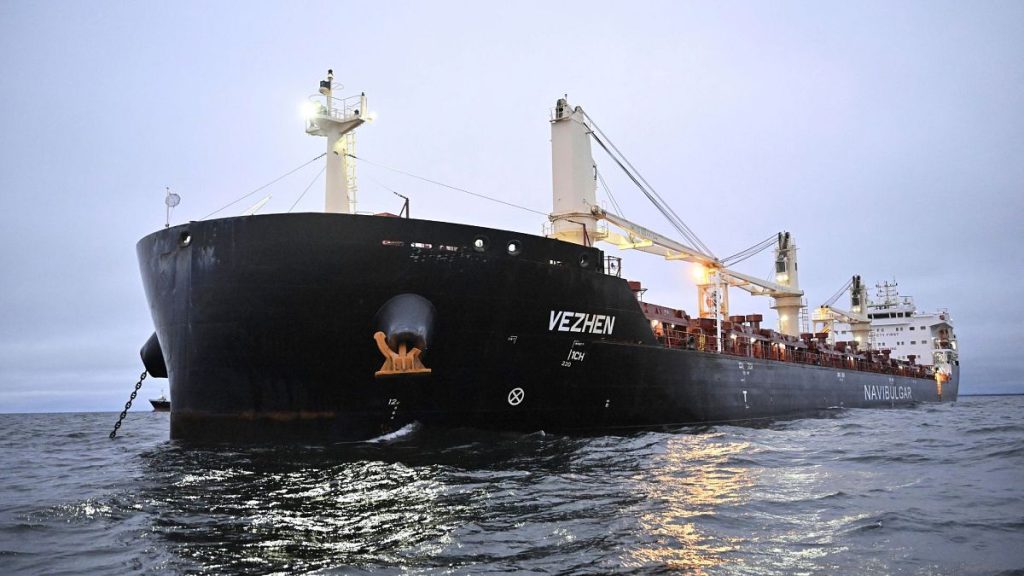The recent damage to a vital undersea fibre-optic cable connecting Sweden and Latvia, initially raising concerns of potential Russian sabotage, has taken a new turn following a thorough investigation by Swedish prosecutors. The investigation, which involved the detention and subsequent release of a Bulgarian-owned vessel, the Vezhen, concluded that while the ship was indeed responsible for the damage, there was no evidence suggesting deliberate sabotage. This conclusion, based on forensic examinations, analysis of seized equipment, and witness testimonies, alleviates immediate fears of malicious intent, although the investigation continues to explore the possibility of other criminal activity related to the incident.
The initial suspicion surrounding the cable damage stemmed from a series of similar incidents in the region, some of which have been linked to Russia’s shadow fleet – a network of vessels operating under opaque ownership structures to evade sanctions. This context, combined with heightened geopolitical tensions, understandably fueled concerns about potential Russian involvement in disrupting critical infrastructure. The Vezhen’s presence near the damaged cable, coupled with the cable break occurring during a period of heightened regional security concerns, understandably raised suspicions. However, the prosecutor’s definitive statement ruling out sabotage shifts the focus towards other potential explanations for the incident.
The Bulgarian shipping company, Navibulgar, owner of the Vezhen, has consistently maintained its innocence, asserting that the damage was an unintended consequence of navigating through challenging weather conditions. They claim that the ship’s anchor dragged along the seabed due to the severe weather, inadvertently severing the cable. This explanation aligns with the prosecutor’s conclusion that the damage was not intentional, though the specifics of the incident and whether any negligence occurred remain under investigation. The investigation will likely delve into the ship’s navigation logs, weather reports, and crew procedures to determine whether the incident could have been prevented with appropriate seamanship.
This incident highlights the vulnerability of critical undersea infrastructure, particularly in a region experiencing heightened geopolitical tensions. Undersea cables are the backbone of global communication, carrying vast amounts of data essential for internet connectivity, financial transactions, and national security communications. Their susceptibility to both accidental damage and potential sabotage underscores the need for enhanced security measures and international cooperation to protect these vital links. While this particular incident appears to be accidental, it serves as a reminder of the potential for disruption and the importance of robust investigation procedures to discern accidental damage from malicious acts.
The investigation surrounding the cable damage also underscores the complexity of attributing responsibility in incidents involving international actors and potentially ambiguous circumstances. The initial suspicion towards Russia, while understandable given the geopolitical context, highlights the importance of thorough and impartial investigations before drawing conclusions. The swift but comprehensive investigation by Swedish authorities, which included international cooperation with Norwegian authorities in a related investigation, demonstrates a commitment to due process and factual analysis in a potentially sensitive situation. This careful approach helps to prevent escalation of tensions and ensures accountability based on evidence rather than speculation.
Moving forward, the ongoing investigation will likely focus on determining whether any criminal negligence contributed to the cable damage. This could involve assessing the ship’s adherence to navigational protocols, the adequacy of their response to the challenging weather conditions, and whether their actions met the standard of reasonable care. The outcome of this investigation will not only determine the legal implications for the shipping company but also contribute to refining safety regulations and procedures to mitigate the risk of similar incidents in the future. Furthermore, it will inform the ongoing discussions about the security of undersea infrastructure and the need for international cooperation to protect these vital conduits of global communication.

